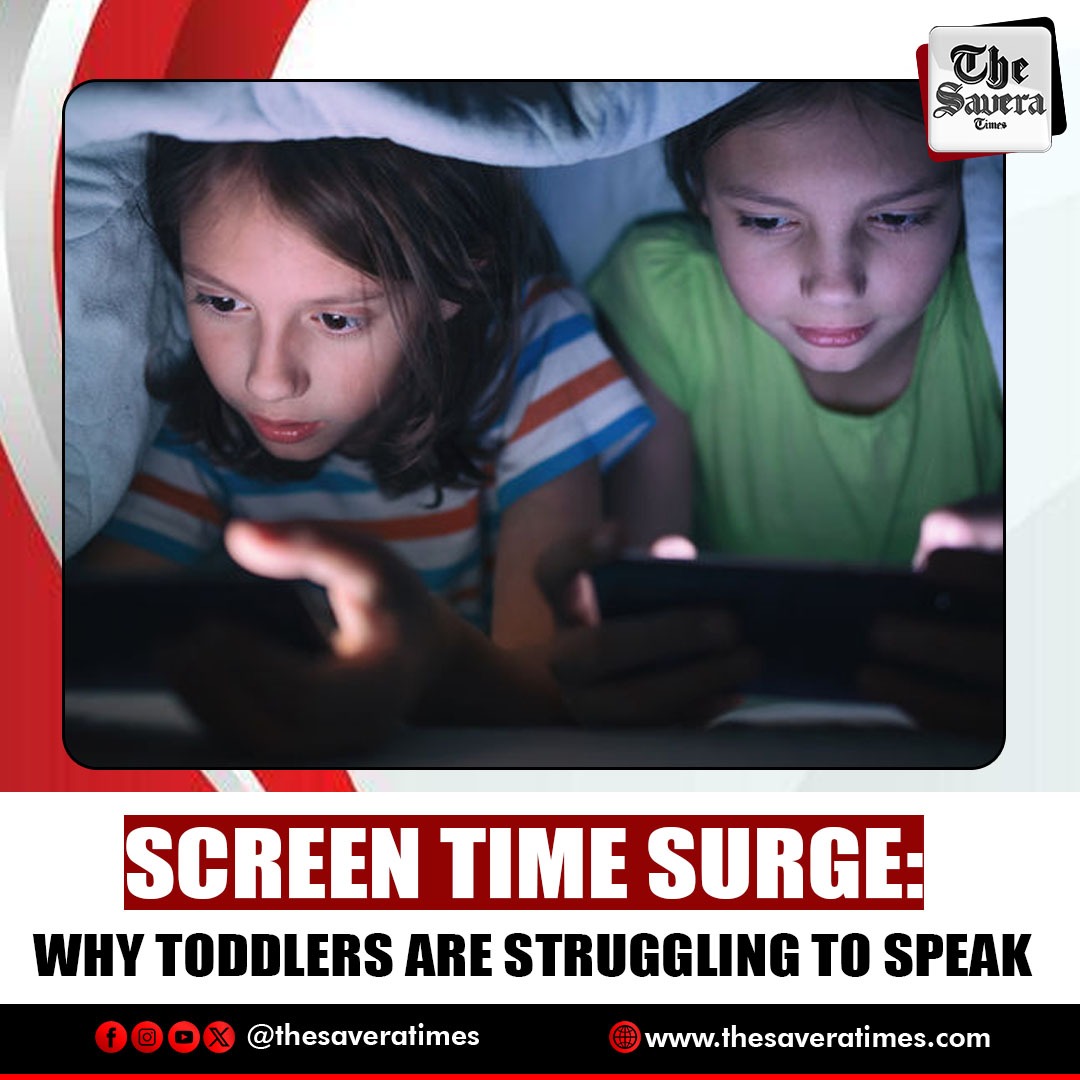
New Delhi: These days, parents often hand smartphones or tablets to toddlers as an easy distraction—no longer needing to gently comb hair or coax them orally to settle down. The world has grown more technological, making parenting feel easier than in earlier generations. But beneath this convenience lies a growing concern: toddlers are absorbing more screens but losing speech opportunities.
Research in India—from experts reveals a surge in speech delays, sometimes manifesting as “virtual autism,” where excessive early screen exposure during critical developmental stages impedes language learning. The deeper the screen time, the greater the language loss: more hours with devices, fewer words spoken.
In recent years, specialists in India have observed a sharp increase in speech delays among young children, with excessive screen time emerging as a primary culprit. This issue, particularly pronounced since the COVID-19 pandemic, is hindering toddlers’ ability to develop critical communication skills during their formative years. Speech therapists, pediatricians, and child psychologists are raising concerns about the effects of prolonged exposure to smartphones, tablets, and televisions, especially in children under three, when the brain is most receptive to language development. While global research supports a clear link between screen time and speech delays, India faces challenges due to limited local data, a shortage of speech therapy resources, and low awareness, particularly in rural areas.
Research indicates that screen time exposure is alarmingly high across age groups. A comprehensive review led by a research scholar at Tezpur University found that 95.2% of children over two years old engage with video content nearly daily, with 60.2% spending over two hours on screens each day. For children under two, exposure ranges from 57% to 96.7%. These figures are concerning because early childhood is a critical period for sensory and linguistic development. Excessive screen use during this time can disrupt the balance of sensory experiences needed for speech, prioritizing visual stimulation over auditory and kinesthetic interactions. A doctor specializing in child language disorders at the All India Institute of Speech and Hearing (AIISH) in Mysore explains that screens overstimulate visual senses, often at the expense of other developmental inputs, leading to issues like speech delays.
The COVID-19 pandemic significantly worsened the issue. Lockdowns confined families indoors, increasing reliance on screens to keep children occupied. A U.S.-based study by Komodo Health found that pediatric speech disorders in children aged 0-12 more than doubled during the pandemic, with infants aged 0-2 most affected. In India, a speech therapist from Jammu, with eight years of experience, reports a “concerning trend” of speech delays linked to excessive screen use, particularly in children under three. She describes symptoms resembling “virtual autism,” where a lack of environmental stimulation from over-reliance on screens impairs speech and social development. A 34-year-old corporate lawyer from Delhi shared how her 18-month-old son became reliant on screens for eight months during the pandemic, watching cartoons for hours daily. By age three, he remained non-verbal, and his speech delays were later attributed to excessive screen exposure. After a year of therapy, his speech lags behind peers, impacting his confidence.
Speech delays extend beyond communication, often leading to psychological and behavioral challenges. A child psychologist in Patna notes that children with speech delays frequently exhibit low self-confidence, anger, and academic difficulties. For instance, a child unable to express a desire to play with a toy may resort to disruptive behaviors like yelling or pushing due to frustration. A 37-year-old journalist from Mumbai described how her four-year-old son, after spending up to seven hours daily on a phone, developed speech delays and anger issues, including throwing toys and self-harm. Six months of therapy enabled him to speak in full sentences, but his experience highlights the emotional toll of delayed communication.
India faces unique hurdles in addressing speech delays. Unlike Western countries with extensive data, India lacks comprehensive, locally relevant research. A pioneering PhD scholar notes that awareness of speech delays surged post-COVID, though they existed earlier. His ongoing research suggests a higher incidence of speech delays among children aged 0-3 than previously estimated, but exact figures are pending publication. The country also grapples with a severe shortage of resources, with only 5,000 Speech-Language Pathology Assistants (SLPAs) for over 50 million speech-related cases. Access to therapy is particularly limited in rural areas. A 42-year-old shopkeeper from a remote village in Anantnag travels 85 kilometers thrice weekly to Srinagar for his five-year-old son’s therapy, sacrificing his livelihood due to the absence of local centers. He emphasizes the need for therapy centers in every district to improve access.
Experts advocate proactive measures to address screen-related speech delays. A Mumbai-based parenting counselor recommends limiting screen time, using interactive apps that encourage verbal engagement, and prioritizing activities like reading and imaginative play. Parents modeling reduced screen use and fostering face-to-face interactions are also critical. A pediatric neurologist from Patna stresses that reduced social interaction during lockdowns hindered children’s ability to learn from their environment, underscoring the need for balanced developmental stimuli. The global speech therapy market, valued at $9.9 billion in 2021, is projected to reach $17 billion by 2031, with pediatrics driving growth. However, India’s market size remains unclear, and the shortage of trained professionals persists.
The Path Forward
A scientist at AIISH Mysore calls for more colleges to train speech therapists and dedicated research institutes to tackle the rising prevalence of speech disorders.
